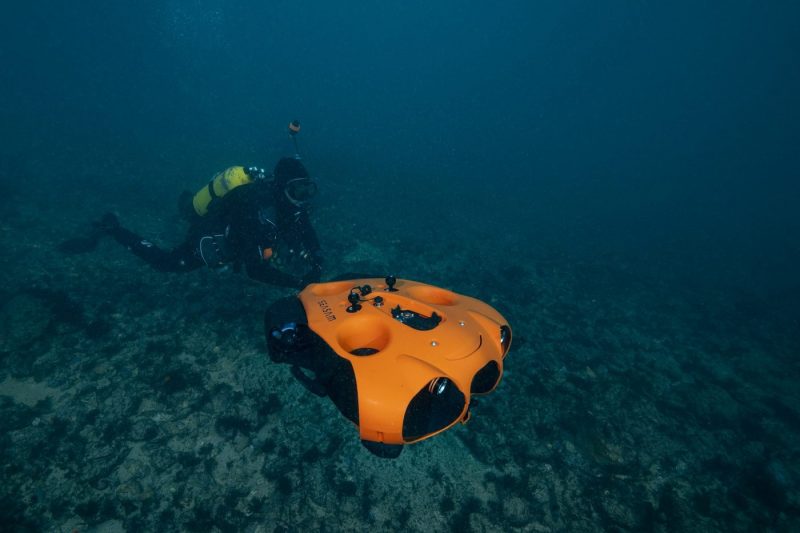
- May 5, 2020
- Théo Cartereau
- Industry, Underwater drone news
- 0 Comments
The Seasam Drone 2.1 update 2.1 brings a lot of new features: New scenarios, new features including wall servoing and many other things have been added in this update!
The Seasam Control 2.1 update is also available. You can read the changes in our dedicated blog post here.
New features
Wall Servoing – BETA
- Wall servoing is now available on the Seasam Control app.
- Wall servoing allows the drone to keep a locked distance from a vertical surface. This allows precise inspections of large surfaces.
- The distance can be set using the corresponding buttons in the Seasam Control main screen sidebar.
- The minimum distance is 0,75 cm
Drone Internal camera control
- It is now possible to use the drone’s internal camera to take pictures and record videos via the Seasam Control app or the drone’s remote.
- The screenshots and videos are stored locally in the drone’s internal memory. You can retrieve the media going in the Seasam Control app logs screen.
- The video files are recorded in .mp4 files. Pictures are saved as .jpeg files.
- The internal storage of the drone is approximately 55Go.
New scenarios
- Ride
- With this scenario, the drone can be used as a scooter. Once activated, the drone will start pulling after five seconds.
- To stop the drone, simply flip it on its back.
- In case of accidental release of the drone, it will stop itself after a few seconds.
- Follow-Side (Left/Right)
- Activated from a Follow position, this will position the drone on the left/right side of the diver, with the camera pointed to the location of the remote. The current orientation of the diver must be maintained during this scenario.
- Activated from a Follow position, this will position the drone on the left/right side of the diver, with the camera pointed to the location of the remote. The current orientation of the diver must be maintained during this scenario.
- Buddy (Left/Right)
- Activated from a Follow position, this will position the drone on the left/right side of the diver, with the camera pointed in a forward position. The current orientation of the diver must be maintained during this scenario.
Dive profiles
- This new features enables specific drone configurations according to the user preference, enabling new scenarios and scenario specific parameters.
- The two new profiles are Work and Supervise.
- Please check our online documentation or the latest Seasam user guide for more information about profiles.
Important changes
Drone remote
- Ergonomics changes:
- Long-press button duration requirement reduced to 0.7s. This allows for faster access to the different menus remote.
- When short-pressing buttons, a dot appears on the corresponding section of the screen.
- When long pressing buttons, a dash appears on the corresponding section of the screen.
- A dot appears on the screen when shortcuts or a scenario is activated.
- The start-up and synchronisation sequence screens have been updated to be more informative.
- Update screens have been reworked and are now much more explicit during the update process.
- New self-tests messages added for headlights, motors and hydrophone checks.
Shutdown procedure improvements.
- The shutdown process of the drone has been improved.
- When a turned off remote is placed on the drone, the shtudown sequence is initiated. After a few seconds, the drone will flash its lights and the remote can be removed. The drone will then turn itself off.
Bug fixes and improvements
Boot sequence
- The drone boot sequence has been reworked to be more stable. A side-effect is a slightly longer but safer start-up of the drone.
Battery
- Battery level readings are now more reliable.
Wi-Fi Beacon
- The Wi-Fi beacon will now flash blue quickly when disconnected from the drone.
Acoustics
- Various bugfixes and improvements have been added.
Drone logs
- Minor changes to drone logs.
Bottom/roof detector
- New behaviour added. The drone disarms itself for five seconds, emits a sound, then switches to the Stay scenario while flashing its lights until a new scenario is picked.
Self-tests
- Added or improved the following self-tests:
- Drone pressure.
- Remote pressure.
- Remote acoustic components.
